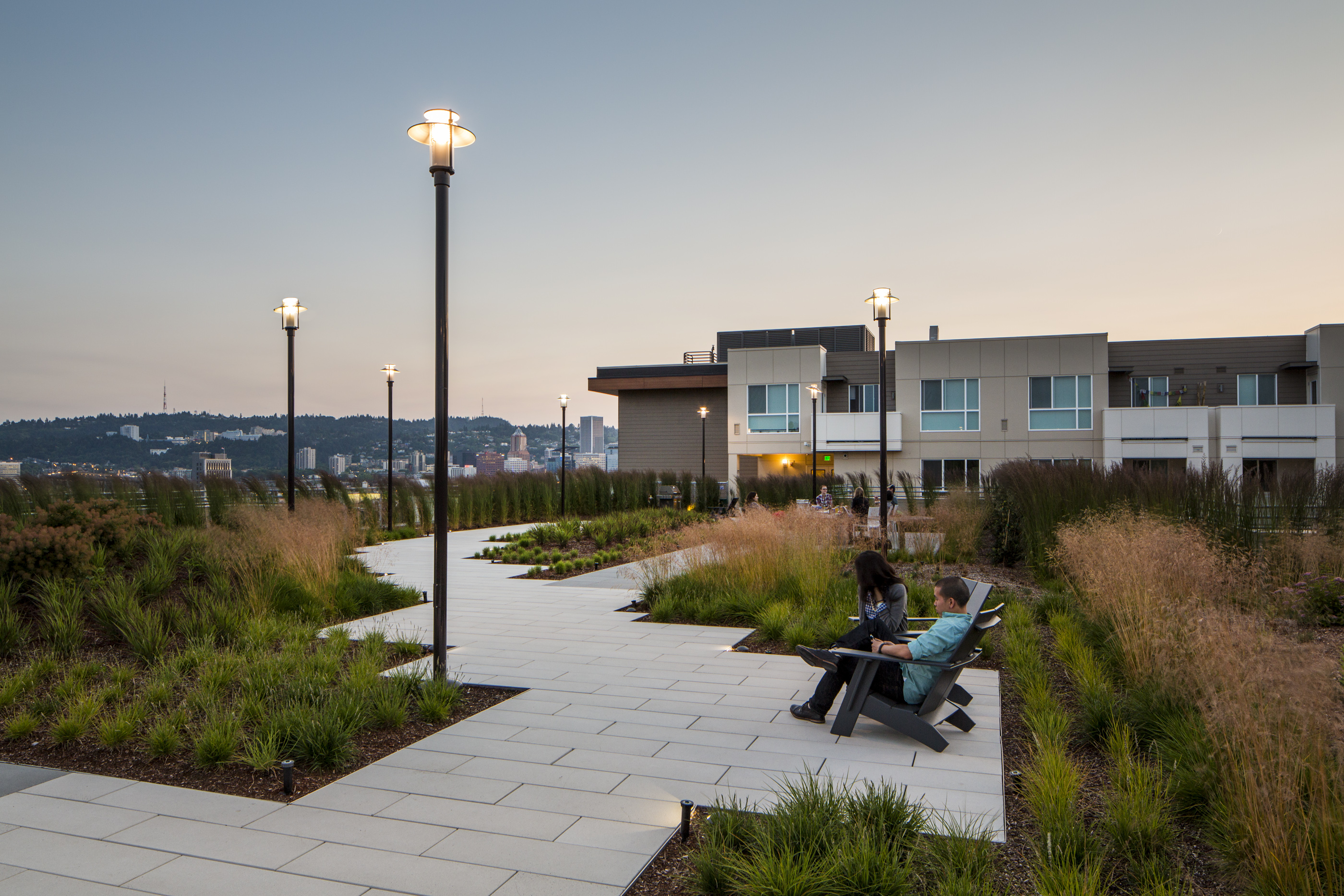Traditional green building certifications are rapidly becoming obsolete, which in many ways is actually a good thing. Within the last couple of decades, sustainability has successfully infiltrated common construction practice and the awareness of the general public. Cities, consumers, and developers now expect all new construction to meet at least a minimum level of sustainability. Some states have even created new sustainable building codes, such as CAL Green in California. As a result, the goal of various green building certification systems—to make the construction industry more sustainable—has largely been realized. (Photo: Jeff Amram of Linden Apartments, Portland, Ore., by KTGY Architecture + Planning)
According to a 2015 study by Dodge Data & Analytics, in partnership with the National Association of Home Builders (NAHB) and Ply Gem Industries, 54 percent of home builders are currently constructing at least 16 percent of their new homes as green. By 2020, the number of green home builders is expected to rise to 81 percent, with more than half building at least 60 percent green homes. Some 83 percent of home builders believe that consumers will pay for homes that are healthier, although healthier and energy efficient can be two separate things.
Wellness Design, the Next Step
Most traditional green building certification systems focus on minimizing material and energy consumption, with user experience being a nice byproduct. As preserving natural resources and maximizing energy efficiency will become the new minimum baseline, wellness design will be the next stage of the sustainability movement. Sure enough, wellness certification systems are now sprouting up.
Wellness design focuses on improving quality of life in buildings and public spaces:
It starts with air quality. Formaldehyde, toxins, and VOCs need to be eliminated from the paints, sealants, and other materials used in interior spaces. In addition, powered whole-house fans should be installed to flush out stale air. These fans also reduce energy consumption and attic temperature.
It continues with light quality. Our built-in-clock is a biological response to light exposure based upon the 24-hour cycle of the sun. Bright, blue-rich light reminds our bodies to be alert while warmer light of the afternoon and evening triggers the beginning of the sleep cycle. Exposure to blue light late at night (from glowing screens and standard residential lighting fixtures) conflicts with our body’s response to night. LED circadian lighting fixtures can contribute to health and well being by minimizing the negative effects caused by the artificial light sources that surround us. Bright light can be used to increase alertness and productivity at appropriate times of day.
Wellness vs. Traditional Sustainability
Promoting exercise and good nutrition separates wellness from traditional sustainability: Wellness design seeks to enhance human health and function through design. Walkability and bikeability play a large role in wellness strategies in addition to being good recreation. Promoting smart nutrition is rooted in property management, but design can also play a pivotal role. Community gardens, demonstration kitchens, and community tables encourage communal cooking and eating, which have proven to be effective in increasing healthy lifestyles among residents, especially children.
Creating communities that foster healthy choices is the goal of wellness design. As with traditional sustainability, good design by its nature provides wellness. Site selection, solar orientation, walkability, access to natural light and ventilation, and emphasis on the experiential qualities of the space will create a great project first, with the possibility of achieving a wellness certification, too—not the other way around. Progressive wellness certification systems today will act as a catalyst for the construction industry and for our communities.
Benjamin Kasdan, AIA and LEED AP, is a senior designer with KTGY Architecture + Planning. He can be reached at 949.851.2133 or bkasdan@ktgy.com.





